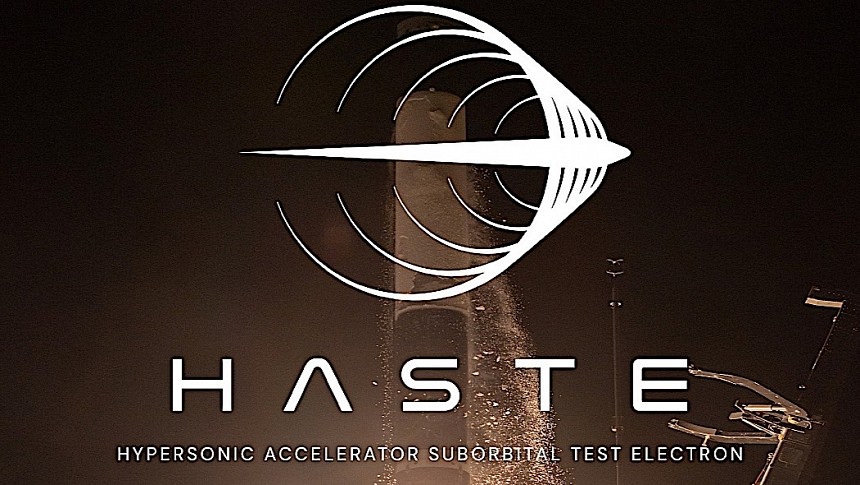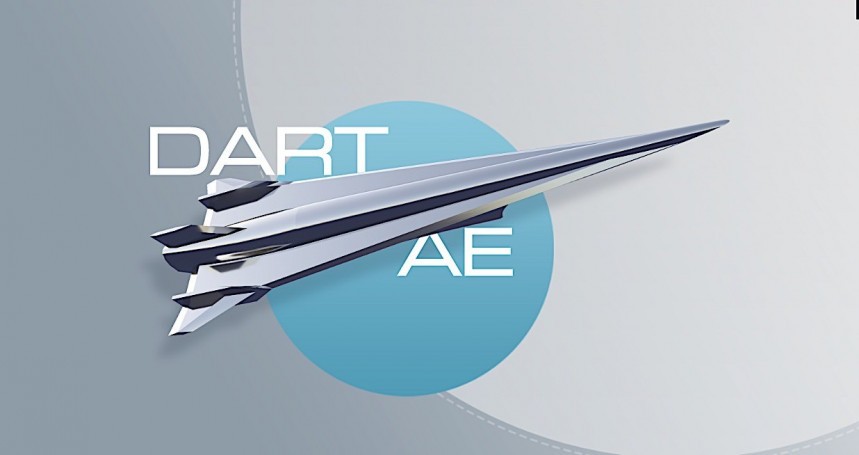The U.S. is presently engaged in a global effort to ensure foes still regard it as the dominant nation of our planet. One way it does this is by literally throwing millions into defense programs and weapons development, with a major focus on hypersonic capabilities.
There are several projects now being run with hypersonic weapons in mind, but of interest to us is something called the Hypersonic and High-Cadence Airborne Testing Capabilities (HyCAT).
This program most recently came into the spotlight back in March, when the organization running it, the Defense Innovation Unit, announced it had selected two vehicles for the HyCAT, namely the DART AE and a yet unnamed drone of a company called Fenix Space – this one can be launched by being literally towed behind an aircraft.
The DART is the star of this here story because its maker, Hypersonix, announced it has selected the launch vehicle provider for the thing: Rocket Lab.
The 3D-printed DART is a drone three meters long (10 feet) that tips the scales at 300 kg (661 pounds). Powered by an in-house-made and also 3D-printed scramjet engine named Spartan, it should eventually be capable of reaching speeds of Mach 7 (5,370 mph/8,642 kph).
For it to be able to make full use of the Spartan, though, it will have to be released from the air, from something that’s capable of accelerating it to Mach 5. Only then will the hydrogen engine be capable of moving further to Mach 7.
This week we learned what that something capable of providing Mach 5 acceleration is: Rocket Lab’s Hypersonic Accelerator Suborbital Test Electron. HASTE for short, it was too unveiled this week as a version of the existing Electron rocket, capable of performing sub-orbital launches.
The rocket can carry 700 kg (1,540 lb) of cargo and uses a modified kick stage that allows it to release hypersonic payloads. In the case of the DART, it will transport it to the speed and altitude required for it to be tested in a number of ways, including when it comes to the “non-ballistic flight patterns, acceleration, and flexible engine burns.”
As per the details of the HyCAT program, the first flight will only require the drone to reach Mach 5 and be airborne, under its own power, for three minutes.
The launch date has yet to be set, and it may come anytime over the next 18 months. The HASTE, however, will fly much sooner, with Rocket Lab prepping a mission sometime by the end of June for a “confidential customer.”
As for Hypersonix, this is a relatively new name to space and defense industries, but we’d better get used to it. Hailing from Australia, the crew is also working on a flight demonstrator called Velos Intelligence Surveillance Reconnaissance (VISR) and a reusable hypersonic launch platform we know as the Delta-Velos Orbiter.
This program most recently came into the spotlight back in March, when the organization running it, the Defense Innovation Unit, announced it had selected two vehicles for the HyCAT, namely the DART AE and a yet unnamed drone of a company called Fenix Space – this one can be launched by being literally towed behind an aircraft.
The DART is the star of this here story because its maker, Hypersonix, announced it has selected the launch vehicle provider for the thing: Rocket Lab.
The 3D-printed DART is a drone three meters long (10 feet) that tips the scales at 300 kg (661 pounds). Powered by an in-house-made and also 3D-printed scramjet engine named Spartan, it should eventually be capable of reaching speeds of Mach 7 (5,370 mph/8,642 kph).
For it to be able to make full use of the Spartan, though, it will have to be released from the air, from something that’s capable of accelerating it to Mach 5. Only then will the hydrogen engine be capable of moving further to Mach 7.
The rocket can carry 700 kg (1,540 lb) of cargo and uses a modified kick stage that allows it to release hypersonic payloads. In the case of the DART, it will transport it to the speed and altitude required for it to be tested in a number of ways, including when it comes to the “non-ballistic flight patterns, acceleration, and flexible engine burns.”
As per the details of the HyCAT program, the first flight will only require the drone to reach Mach 5 and be airborne, under its own power, for three minutes.
The launch date has yet to be set, and it may come anytime over the next 18 months. The HASTE, however, will fly much sooner, with Rocket Lab prepping a mission sometime by the end of June for a “confidential customer.”
As for Hypersonix, this is a relatively new name to space and defense industries, but we’d better get used to it. Hailing from Australia, the crew is also working on a flight demonstrator called Velos Intelligence Surveillance Reconnaissance (VISR) and a reusable hypersonic launch platform we know as the Delta-Velos Orbiter.








